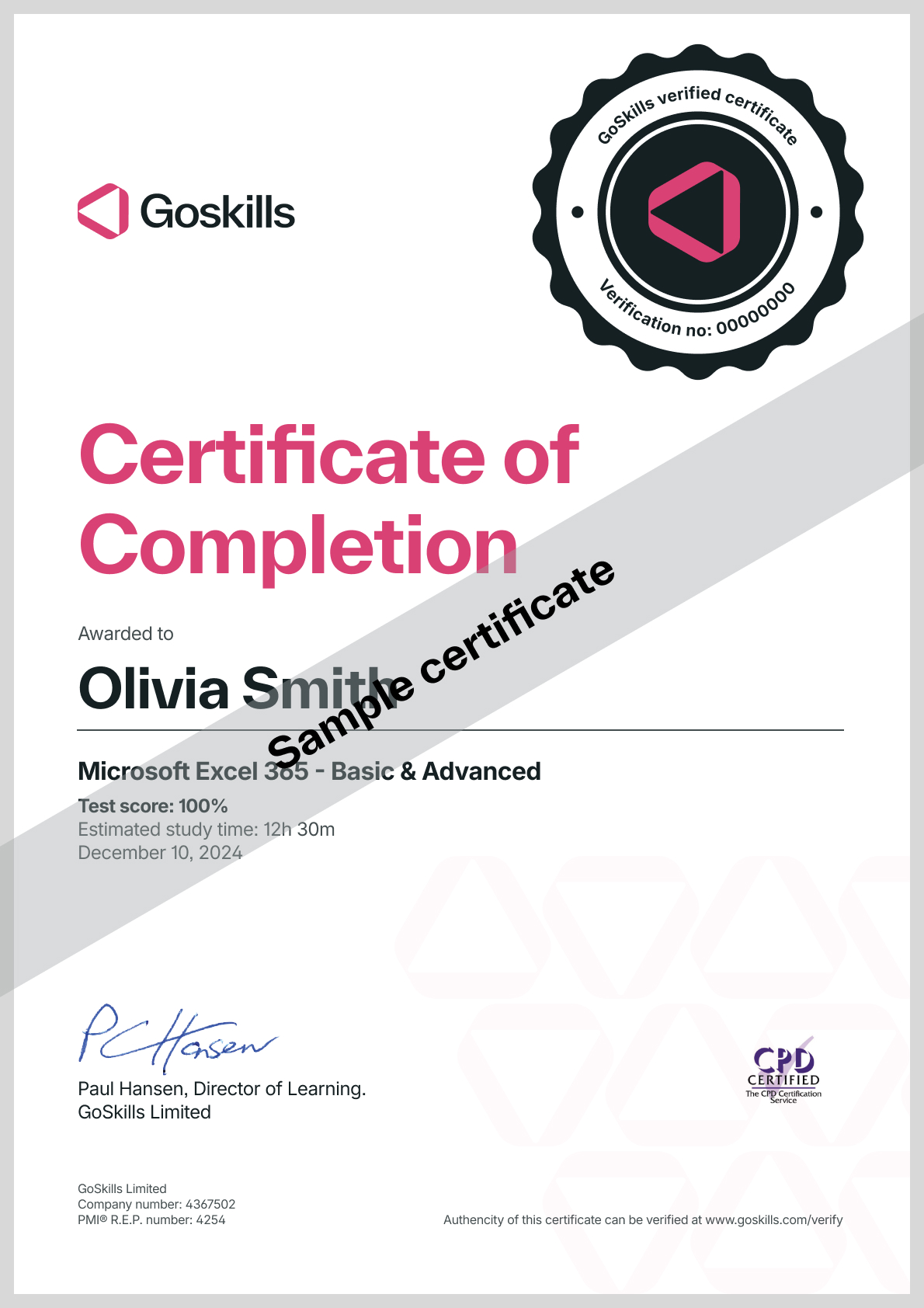Photoshop for Beginners
Photoshop for Beginners
Skills you’ll gain
New to Photoshop or need a refresher? This online course is designed to give you a solid foundation in the basics of Adobe Photoshop.
In 58 engaging lessons you will learn how to use basic techniques like layer masks and clipping masks, remove backgrounds, create custom shapes and a variety of effects, plus more.
Whether you use Photoshop for work, study, or leisure, these tutorials will start you on your journey to becoming a Photoshop pro!
Video tutorials are recorded in Adobe Photoshop CS5 and CS6.
If you've used Photoshop before, try our Advanced course. And if you'd like to know everything - from beginner to advanced lessons, why not take both?
Once enrolled, our friendly support team and tutors are here to help with any course related inquiries.
Syllabus
Download syllabus-
1
Changing Skies with Blend If Blend If is used when combining multiple images that contain strong color contrasts. It is also good for fast editing of multiple images. 3m
-
2
Patch Tool Content Aware When you have a lot of individual elements that you want to be able to change as a group. 2m
-
3
Color Splash Effect This technique can be used for various reasons: as a selection technique, or for stylistic effects, such isolating the subject of an image, or reducing the color range of an image to just a few key colors. 3m
-
4
Brown to Blue Eyes This is a good way to select and change the color of complex objects, such as an eye, in a very realistic way. Great for model photography, or just playing the ‘what if’ game. 3m
-
5
Brighten Teeth As Lightroom is a great tool for organising your photos, this technique can be useful for quick color adjustments to photos, without going into PhotoShop. But just incase the adjustments you want to make are more complex, then this will show you how to do the same thing in PhotoShop. 7m
-
6
Old, Cracked Photo Effect This is great tutorial to learn more about Adjustment Layers, blending images together and really taking control of your old-timey look. Put yourself into photos of your grandparents wedding, or just embrace your inner hipster. 4m
-
7
Clone Yourself This is a special effect tutorial that also introduces you to the power of Layer Masks. You will learn how to integrate elements of different photos to make an image that is not physically possible. Mostly for evil purposes, but fun nonetheless. 3m
-
8
Photographic Toning Another great tutorial to help you find the hidden gems in Photoshop. This time, it is the gradient map adjustment layer, and the extra gradients that can help transform your images instantly. On top of that is the simple introduction to the power of actions for speeding up your workflow. 2m
-
9
Vibrance vs Saturation The difference between these two is useful to keep in mind when editing photos that contain people, as opposed to landscape, or architectural photos. 2m
-
1
Non-Destructive Burning, Dodging Use when adding highlights and shading. Particularly useful for adding depth to close-ups. 3m
-
2
Creating Custom Brushes Useful for customizing Photoshop to your own uses, particularly for repetitive tasks and developing unique uses. 6m
-
3
The Ruler Tool The straighten feature is a quick way to re-orientate an image or a photo that is crooked. This is a great tool for quickly processing architecture and retail photos. 1m
-
4
The Crop Tool These tools are great for changing a photos dimension, for singling out individuals from a group photo, or cutting out unwanted power lines. Also useful for changing the aspect ratios of a photo (widescreen, for example). Remember, sometimes the difference between a great picture and an amazing picture is a creative chop away. 2m
-
5
Content-Aware Move An incredible tool for content altering. With this tool, you can move objects around, and deform or change existing elements in the image with surprising ease. Quite frankly, you are never going to believe what you see in a photo again…. Sorry about that. 2m
-
6
Blur Gallery For CS6 or above: three new filters that photographers have been dying to get their hands on – Field Blur, Iris Blur and Tilt Shift. 5m
-
1
Tileable Textures If you ever want to take a small image and use it to fill out a background. This tutorial will show you how to do this so that it is seamless and well positioned. Good for nature images, like clouds and trees. But it could also be used for adding a tiled corporate logo to document backgrounds. 2m
-
2
Create a Web Search Bar This is a set of good design tricks that will have you making great looking boxes and buttons for your web design. 4m
-
3
Create a Cloud Icon As offsite storage is becoming more predominant and trusted, a customized cloud icon can go a long way in communicating to your co-workers and clients. 7m
-
4
Old Paper Effect International Pirate Day is always something that sneaks up on you. With this tutorial, you can be prepared this time. Hide your treasure properly, or just pretend to find that old recipe that your great Grandmother bequeathed: you know, the one with avocadoes in it! 5m
-
5
Puffy Clouds Learn how to create a custom brush to paint in soft fluffy clouds into a scene whenever you what, and with far more control than the automated Photoshop generator offers. 3m
-
6
Create a Rough Ticket Icon This is great for paper textures, and designed not to be a square. Learn how to boule shapes to create new ones, and add rough textures to the edges. 5m
-
7
Create a Wood Texture This tutorial is great for those looking to create a natural tone background for their design. The texture can be further tweaked to create a variety of effects, colors and grain styles. 3m
-
1
Candy Cane Text Effect Great for holiday themed messages and a good tool for creating stripes for other designs using the Define Texture feature. 5m
-
2
Snow Covered Text Effect Add a special effect to text for the holidays, or the effect of snow to photos or illustrations. Can be used to make snowballs, snowmen and clouds. 3m
-
3
Neon Text Effect This is a quick way to create an old-style-retro or futuristic neon look to your text headings. Remember, you can also use these techniques on basic shapes as well, such as hearts, road signs, or any of the basic shapes found in the Shapes Panel. 4m
-
4
Gold 'Bling' Text Effect Add some bling to your life. Print it, cut it out and wear it around your neck for parties. Make your own EGOT! Or set up a casino in your backyard. 3m
-
5
Editing Multiple Type Layers When using multiple text layers for designing things like posters, and pamphlets, or more idiosyncratic projects, like comic style text bubbles, or when adding text fields over photographs. Example use would be if you were creating a series of posters that will have different color text, depending on the theme. 2m
-
1
Color Range Changes This is run down of the improvements on the color range selection method. Of particular importance is the face detection technology, which make the tool even easier to use. (PS6 and above) 1m
-
2
Oil Paint Filter Use the Oil Paint Filter to create a stylistic effect from regular photographs. Good for grandparents, kids, pets and kites. 1m
-
3
Perspective Cropping Use it to make full-page images from elements that were photographed on an angle. Super easy to use, and the quality will surprise you. For CS6 and above versions of Photoshop. 2m
-
4
Replacing the Sky This tutorial shows you three great ways to composite images together: The Blend If function in the Layer Styles, the Select Color method and the Quick Selection Tool. 8m
-
5
Turn a Photo into a Painting Learn how to create a painted effect on a window by applying just four filters. Perfect for those of you who want to get more ideas of how effects layered on top of each other can create amazing results. 3m
-
6
1950's Style Pin-Up Poster Go back in time to the 1950’s with just a few filter effects. You know the 1950’s? A time when men were non-violent and sensitive and women were a respected part of society. Oh, wait… So despite all that, some of the fashions and style of the 50s were pretty cool and with this tutorial you can add age and burning crease lines to an image. 14m
-
7
Mystical Mountain Photo Composition Compositing, or merging one image into another so that they are seamless, is one of the key skills in Photoshop and this extensive tutorial shows you how to do this with a number of different images, like night and daytime images, and a moon. 13m
-
8
Turn Day to Night Photography is about light, and one of the great things about the challenge of this tutorial is that it can help you think how the same environment reflects different types of light. 11m
-
9
Create Smoke on Your Photos Add steam rising from beverages or vents. Add cigarette or chimney smoke. Need to prove that it was cold in your last holiday destination? This is the effect for you. 3m
-
10
Colorize a Black and White Photo This is another great tutorial for learning how selections and the Blend If works. Use it for adding color to black and white images, or even for advancing your selection techniques in color images (using tone, rather than color) 4m
-
11
Carve a Heart into Snow Great for cards, logos, seasonal messages and personal projects. Use in conjunction with our ‘Create Your Own Custom Shape’ lesson. 6m
-
12
Create a Winter Wonderland This is a great tutorial for learning how to transform images: selecting grass and turning it snow, and adding a cool filter to the image. 11m
-
1
Bokeh Effect Create a custom Bokeh Effect brush and then give your photos that artistic touch. Or turn a regular photo into a nice abstract background for a logo or text. 6m
-
2
iOS7 Photo Icons This is a good tutorial for brushing up on your Photoshop design skills. Learn how to draw and duplicate shapes into pattern structures. Good for icon and logo design. 5m
-
3
Create a Realistic Wax Seal The design result in this tutorial is very specific, but the result looks great and introduces you to some of the more creative ways to use Bevel and Emboss. So these are great skills to have up your sleave whenever you need to give your project that extra lift. 7m
-
4
Create Abstract Fireworks Learn how to design your own brush patterns and layer together an abstract bursting effect. A great place to start your imagination motor running. 8m
-
1
Harry Potter Text Effect This is another great tutorial to sharpen up your skills in layer styles, metallic effects, lighting effects and depth… Besides, who doesn’t want to add a little magic to the desktop every now and then? 3m
-
2
Chocolate Text Effect This tutorial is great for showing you how to give depth and substance to your text design, and how the Bevel and Emboss style effect can really make a difference. Also… yum! 6m
-
3
Frozen Text Effect While text is mostly seen in a solid state, few know that it can be transformed into a frozen form. Got that big ski trip to organize? Or want to add some ice to your presentation? This is the tutorial for you. Like always, the stuff you might learn along the way is pretty neat too. 5m
-
4
Iron Man Text Effect The metallic look of this text style can be useful in a number of contexts. Particularly in the auto industry, a slick metallic look and feel to both text and design elements can appeal to the viewer’s inner rev head. 9m
-
5
Modern Warfare 3 Text Effect This tutorial has some great elements to sharpen up your Photoshop skillset: customizing fills, abstract wavy lines, and tech/glitch like effects. 5m
Certificate
Certificate of Completion
Awarded upon successful completion of the course.

Instructor
Howard Pinsky
Howard is an Adobe Community Professional and online educator providing content for Adobe Photoshop and Lightroom. His Photoshop tutorials have been recognized by schools around the United States, numerous design blogs around the Internet, and by Adobe itself. Howard's work can also be seen on YouTube and through Adobe's education portals.
Howard has been using Photoshop for the past 11 years and has primarily focused on design education over the last 7 years, to provide accessible and engaging online video tutorials. Today, Howard is a marketing manager at Fullscreen in Los Angeles and still provides handy Photoshop tips on his dedicated YouTube channel.

Howard Pinsky
Adobe Community Professional
Accreditations
Link to awardsHow GoSkills helped Chris
I got the promotion largely because of the skills I could develop, thanks to the GoSkills courses I took. I set aside at least 30 minutes daily to invest in myself and my professional growth. Seeing how much this has helped me become a more efficient employee is a big motivation.


